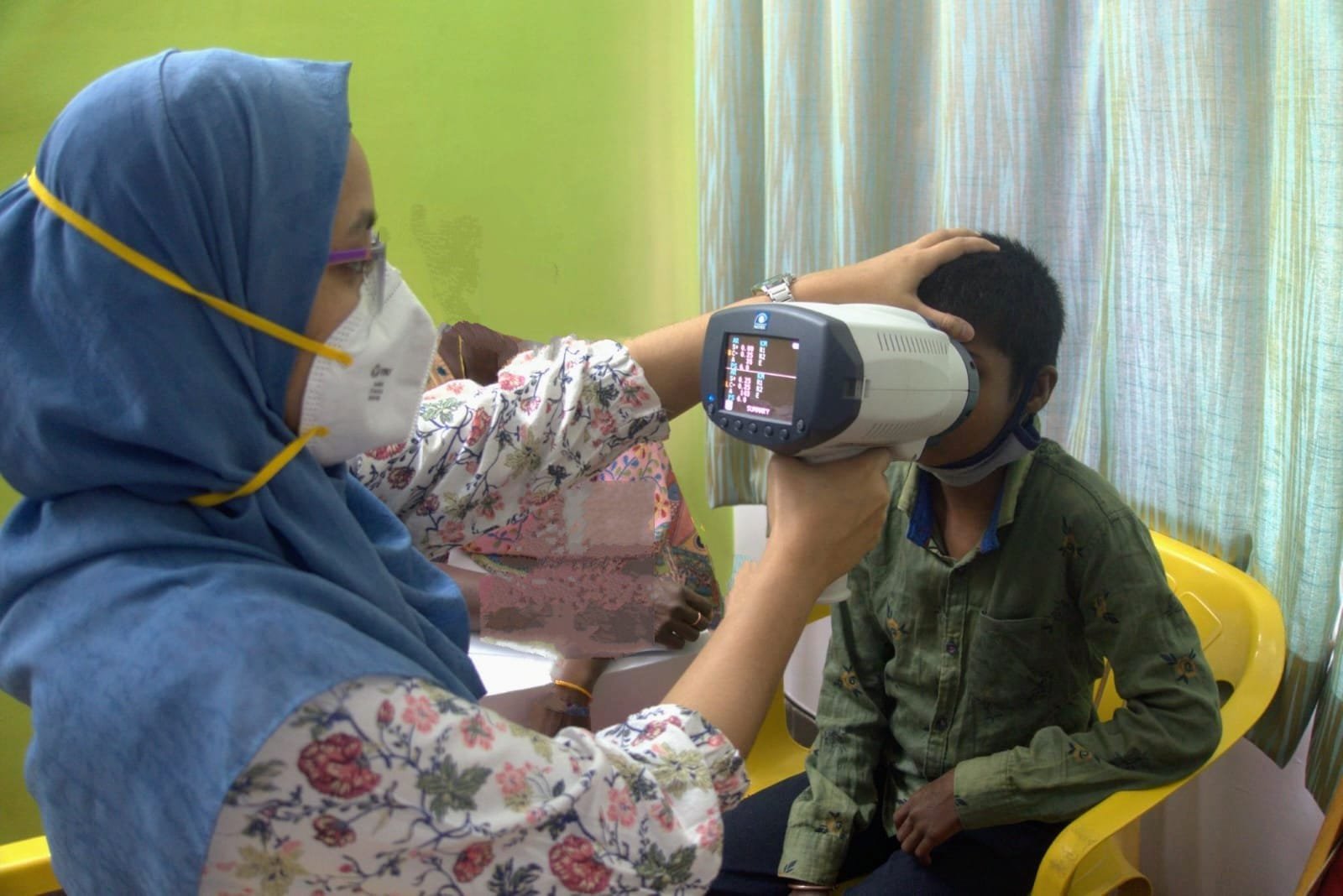New global study could help to bring eyecare services to the doorstep of millions of people in underserved communities
The health professional is using a hand-held autorefractor to diagnose vision impairments
Image location: LV Prasad Eye Institute, Hyderabad, India.
Globally, approximately 90% of all vision impairment can be prevented or treated. Uncorrected refractive problems account for more than 53% of all cases of vision impairment.
Simple-to-use and affordable hand-held autorefractors have the potential to address challenges in addressing refractive errors, particularly for underserved populations that have little or no access to eye care. ATscale is supporting a large-scale study to determine the effectiveness and feasibility of using hand-held autorefractors in LMICs.
“The global incidence of near or distance vision impairment is at least 2.2 billion people where 1 billion people have avoidable vision impairment due to various causes. Nearly 88.4 million vision impairments are caused due to refractive errors which may be addressed by undertaking a population centered approach by bringing diagnostics and interventions at the doorstep of the community. We believe that the proposed study can support in mitigating the challenges posed by blindness due to uncorrected refractive errors by bridging the gaps in access to diagnostics and facilitating intervention measures,” said Dr. Santosh Moses, Principal Investigator, IQVIA.
In many low-and middle-income countries (LMICs) only a small part of the population is ever screened for refractive error so most people who need corrective lenses or other services are not identified. The existing refraction services often rely on highly qualified eyecare professionals (ophthalmic technicians, optometrists, or ophthalmologists) of which there are few, and diagnostic services have a limited geographical reach. To partially address the shortage of eye care professionals, non-eye care specialists like community health workers are trained to provide screening services.
Autorefractors are automated machines used to calculate the refractive error by detecting how the patient’s eye influences infrared radiation sent into the eye. Up until recently, this diagnostic technology has been too costly for many contexts. New innovations that are reasonably priced and simpler to use are now entering the marketplace and require testing to ensure effectiveness, safety, and feasibility of scaling within LMICs to see whether and how autorefractors can become more commonly used to diagnose refractive errors.
The study will compare the effectiveness (sensitivity and specificity) of different hand-held autorefractor models with other refraction devices (desktop and retinoscopy), determine the feasibility of prescribing eyeglasses based on results of autorefraction alone, and assess the potential for scaling up handheld autorefractors in public health settings within LMICs.
Due to take place in Nigeria, Ethiopia, and Nepal, the study will evaluate how to best train community health care workers to use the selected autorefractors within different settings and for different populations – adults and children.
This study will be conducted by IQVIA – a leading global provider of advanced analytics, technology solutions and clinical research services to the life sciences industry dedicated to delivering actionable insights in collaboration with L V Prasad Eye Institute – a World Health Organization Collaborating Centre for Prevention of Blindness, and the work will also be guided by global experts in the eye care sector.
The project began in September 2023 and is expected to run until February 2025.
